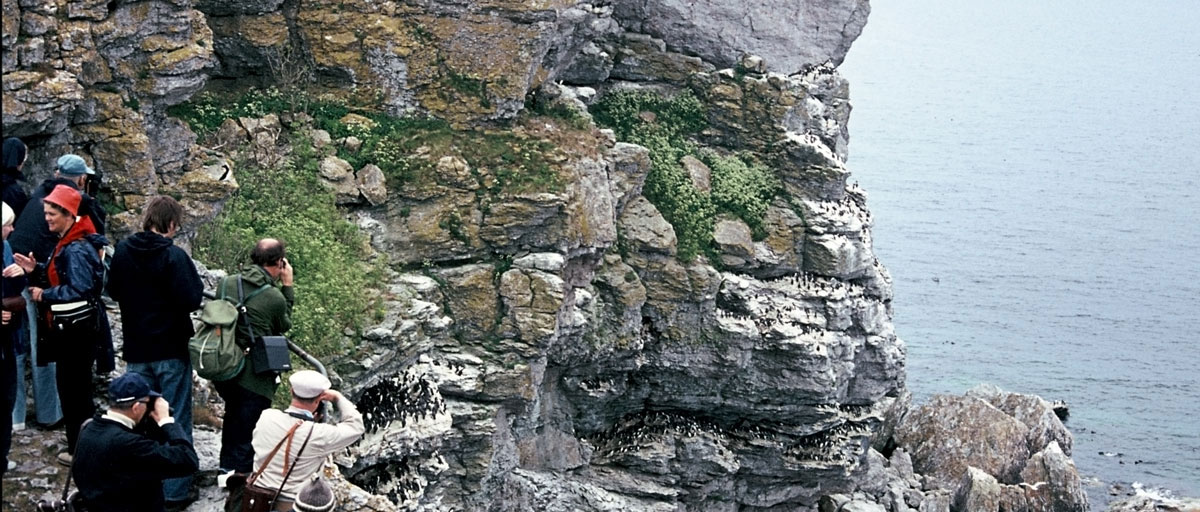Amateur photographs reveal population history of a colonial seabird
Summary
Long-term datasets are necessary to examine human impacts on ecosystems [1]. However, standardized scientific inquiry generally only dates back 30–40 years. Therefore, alternative approaches are necessary to obtain long-term ecological data. For example, previous studies have used newspaper reports to derive fish catch rates [2], historical photographs to study phenology [3] and fish size distribution [4], as well as fish bone data from archaeological excavations to derive growth parameters [5]. Photographs have also been used to provide useful information about marine animal populations [6,7]. Inspired by these approaches, we collected and analysed amateur photographs of the major seabird colony in the Baltic Sea. Based on these photographs, we reconstructed a uniquely long (98 years) time series of the population trend of common guillemots (Uria aalge). We found that the population has increased from low numbers in the early 20th century, to a historically high level today. Changing population trends appear linked to variable human influence on this marine ecosystem.







